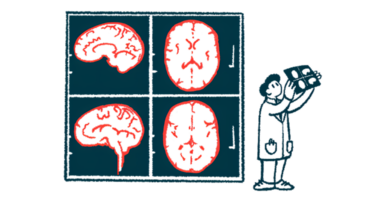#AANAM — Use of Highly Effective Treatments for RRMS Increasing but Still Limited, Study Says

Although the use of highly effective disease-modifying treatments (HETs) in patients with relapsing-remitting multiple sclerosis (RRMS) has increased, they still represent a minority among the treatment strategies used, according to a study.
The study, “Trends in the use of Highly Effective Disease Modifying Treatments in Multiple Sclerosis over 12 years across 10 Sites,” was presented by Marisa McGinley, from the Mellen Center, Cleveland Clinic, at the 2019 American Academy of Neurology (AAN) annual meeting, held May 4–10 in Philadelphia.
According to McGinley, the “treatment landscape has changed a lot in the last decade,” with several therapy options now available for MS. However, “the optimal treatment strategy is not known,” which may lead to significant variability in clinical practice and in patients’ outcomes.
To shed some light on the best treatment strategy, two ongoing trials — DELIVER-MS (NCT03535298) and TREAT-MS (NCT03500328) — are currently comparing low/moderate-efficacy treatments (LMTs) and HETs as the initial treatment approach in early RRMS.
In addition, researchers at the Cleveland Clinic have assessed changes in the practice of prescribing HETs versus LMTs over time in RRMS patients, across 10 academic MS centers in the U.S. and Europe. The results of this analysis were presented by McGinley at the AAN meeting.
Data on demographics, MS disease history, and iPad-based neuroperformance tests were obtained via the MS PATHS database. The proportion of HETs and LMTs was determined yearly, between 1993 and 2018, in the entire RRMS group and in a subgroup who had not previously been treated.
Tysabri (natalizumab, marketed by Biogen), Lemtrada (alemtuzumab, by Sanofi-Genzyme), Ocrevus (ocrelizumab, by Genentech), and the off-label MS therapy rituximab — marketed as Rituxan in the U.S. (by Genentech and Biogen), and MabThera (by Roche) in Europe for certain autoimmune diseases and blood cancers — were classified as HETs.
Any other U.S. Food and Drug Administration-approved treatment for RRMS was classified as an LMT.
A total of 5,969 RRMS patients (mean age of 45.4 years) on treatment were identified in MS Paths — 4,642 were receiving LMTs, while 1,327 received HETs. In this group, 74.9% were women, 60.6% were white, and 72.6% had more than 12 years of education. The patients’ determined disease steps score — a measure of disability in MS — was zero (normal).
The mean disease duration of this RRMS patient group was 11 years. Of these patients, 54% were employed full time, and 57.9% had private insurance.
The team also analyzed a subgroup of 2,251 RRMS patients (mean age of 45.3 years) who had not previously been treated (treatment-naïve). Of these, 73.3% were women, 58.5% were white, and 74.1% had more than 12 years of education. The determined disease steps score was zero, and their mean disease duration was 8.77 years.
Results showed that in the overall RRMS population, HETs were first used in 2006 by 27.3% of the patients, which increased to 43.8% in 2018. In treatment-naïve patients, the first HET use was in 2009 by 9.5% of the patients, increasing to 32.3% in 2018.
Data further showed significant variability in the proportion of patients on HETs across different sites, indicating that MS treatment strategies vary significantly from site to site.
Overall, the data indicated that “LMT continue to be the most used medications in both treatment-naïve and non-treatment-naïve patients,” McGinley said.
“Utilization of HET has increased over time in MS, but it remains the minority of [disease-modifying treatments] used, and currently only accounts for about a third of first line treatments used,” she concluded.
At the AAN meeting, Multiple Sclerosis News Today had the opportunity to interview Daniel Ontaneda, MD, from the Cleveland Clinic, the lead researcher on the DELIVER-MS trial.
Like McGinley, Ontaneda also emphasized that the MS therapeutic field is evolving “quite rapidly,” and that the DELIVER-MS trial comparing HETs and LMTs will help “answer what treatment philosophy should you take. Is it better to hit hard with one of our most effective medications at the beginning, or use this escalation approach, which is to start with a low or moderate efficacy medication?”
Commenting on the results obtained, Ontaneda noted that although the 10 MS centers involved in the study “are kind of at the forefront of MS,” and therefore one “would imagine that they’re kind of the more forward-thinking or modern-thinking centers,” even in those centers, the data show that “we’re not using as much highly effective therapy as we could.”
“I think that everyone professes that, yes, it’s important to treat early with highly effective medications, but we look at the data and it’s not there,” Ontaneda said. He believes one of the reasons for this is “the lack of any meaningful evidence to demonstrate if it is better to use one of these highly effective therapies upfront.”
According to him, a comparative study is needed. “We’ll have that with DELIVER-MS; we’ll have it with another trial called TREAT-MS so that’s definitely going to happen.”
Ontaneda also suggested that “barriers from the payer perspective,” especially in the U.S., might be an obstacle for the use of more HETs, as payers typically prefer people to start with a low- or moderate-efficacy therapy, and then escalate if they need to.
But changes are happening. “I would say the payers are getting a little bit smarter about this, and the trials will also inform on their results. I would say that the final thing is that in MS, we are not really great about quantifying the risk of untreated disease. … We say, oh, this medication is going to help with relapses, but we really don’t have data to say this is what’s going to happen with you in 10 years if you go with medication A or B,” Ontaneda said.
He believes that the increasing trend seen with HET use will continue. “I’m not sure if we’re going to reach the point where it’s going to be all highly effective therapies because I think there’s a variety of different cases of MS,” especially milder cases “where you probably don’t want to expose them to a medication that potentially has more risks.”
But, he added, “I think what’s happening is that the highly effective therapies that were being launched in the last several years are medications that have much better safety profiles. I think that’s what’s driving that increase over time.”
He hopes that the DELIVER-MS trial, as well as TREAT-MS, will offer data on the clinical effects of HET versus LMT, so that patients and physicians can make more informed decisions.
At this point, the idea is “that the earlier you treat, the harder you treat at the beginning, those patients will probably do better,” Ontaneda said. But “the question is should we take a cookie-cutter approach where we say everybody should be on highly effective [therapies], or should we develop biomarkers that say this is a patient that’s going to respond to x, y, or z medication?”
Further research is needed to address this question.






